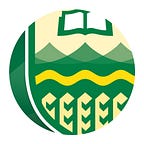The soldiers
Canada became a nation on the battlefields of the First World War — and hundreds of the U of A’s first students and staff fought and died there.
More than 61,000 Canadians died in the First World War, with significant losses occurring at three key battles: the Battle of Second Ypres (1915), the Battle of Vimy Ridge (1917) and the Battle of Passchendaele (1917). Though the loss was steep, the battles were crucial to the eventual Allied victory — and to Canada’s emergence as a nation.
In 1914, as the Great War began, there were only 439 students and staff members at the University of Alberta. By the time the war ended in 1918, 484 had served in the war effort. Eighty-two of them did not return home to their families. A plaque in Convocation Hall lists the names of each soldier who sacrificed his life for his country.
Most of the soldiers from the U of A served in the infantry, with many more serving in artillery and the medical corps. Despite being spread out all over the European continent, the soldiers felt a great sense of community, often with support from home. Though not enlisted in the armed forces, student Helen Montgomery helped organize the Canadian Soldiers’ Comforts Club, which raised money and shipped socks and food to the troops. The club also published a newsletter every two weeks to send overseas.
Reg Lister, who worked at the U of A for 45 years and was its first superintendent of residences, joined the №11 Field Ambulance (also known as the Western Universities Overseas Field Ambulance) alongside 32 U of A students and under the command of medical professor Heber Moshier. In 1917 the unit was sent to France, along the Vimy front. That spring, they held a mock convocation ceremony in a hut on the front, “with hoods and gowns made of everything from a sand bag to a canvas water bucket.” In June, a reunion was held with all the men from the U of A who were in the Canadian Corps in France. According to Lister, “It was a very nice affair, and I believe it was the only time so many from the U of A got together; and many who were there that night did not return to Canada.” That included Lieutenant-Colonel Heber Moshier, who was killed in action Aug. 29, 1918, during the 2nd Battle of Arras. Lister returned to Canada in September 1919, resuming his duties at the U of A.
For many years, the names of the 82 fallen U of A soldiers were recited out loud at an Armistice Day ceremony in Convocation Hall. President Henry Marshall Tory would read the names, but he could never finish without breaking down in tears. Tory knew first-hand of the sacrifice being made, having served overseas during the war, but he was also very proud of the contributions made by the university during that time. He said, “Certainly civilization is asking a terrible price, but a price which is worth paying, if liberty and honour are to be conserved in the world.”
A memorial organ was placed in Convocation Hall in 1925. It remains to this day, alongside plaques and artifacts memorializing members of the U of A community lost in two world wars — men and women who made the ultimate sacrifice for their country.
U of A students and staff who died in the First World War
Frederick Stanley Albright
John Crawford Anglin
Cyril Keith Aylen
Girtle Louis Baker
Herbert Joseph Ball
John Richard Barker
Francis Benedict Barnes
Harvey Taylor Beecroft
Percy Douglas Sinclair Broad
William Edward Lee Broad
Robert Thomas Campbell
John Bryson Cascaden
John Francis Costigan
Laurence Holtby Crawford
William Henry Davis
Arthur Wilbert Deitz
Henry Humphrey Dinning
Louis A. Dobry
Arthur William Donald
James Sherman Doze
Gregor Stuart Drummond
Albert G. Eakins
John Norris Eaton
Albert Ernest Exall
John Ogilvy Fairlie
Samuel Cranswick Ferguson
Gordon Stanley Fife
Maxwell Donald Fraser
Ralph Milton Gibson
Joseph Albert Gordon
Charles Alexander Grant
Pierre-Eugene Guay
John Ralph Hammond
Samuel Richard Hosford
Arthur M. Hummel
Angus Hutchinson
Daniel Robertson Knox
Charles Lane
George Masson Lavell
Victor Leese
William Roberts Lister
John William Gow Logan
Svienbjorn (Barney) Lopston
Roy Courtenay Lutz
John Macpherson
John Dalton Macwilliams
Ronald Hutton Martin
Edward Frederick W. Maunsell
Robert Norman McArthur
William Carey McKee
Lewis Stanley Mckeen
Locksley McKnight
Percy Byron McNally
John Donald McPherson
Alexander Robertson McQueen
Alva E. Metcalfe
Heber H. Moshier
Karl Fletcher Murray
Frank S. Occomore
John Parker
Ernest Howard Parsons
Frederick Arnott Perraton
Harold Gordon Riddell
Claude Wilson Ritson
Frederick William James Roberts
Alexander Glasgow Robertson
Albert Edward Frost Robinson
John Griffith Russell
Harold Arthur Skene
Robert Smith
Roy Clarke Steckley
Thomas Alexander Talbot
Howard Thomas Taylor
William James Taylor
Andrew Telfer
James Robertson Thompson
William Slater Turner
Emery James Van Petten
George Edmund Welbourne
Clement Beck Wilson
James Christian Lawrence Young
Percy Young
For almost as long as there’s been a Canada, there’s been a University of Alberta. Over the next year, in honour of Canada’s 150th anniversary, we’re proudly celebrating the people, achievements and ideas that contributed to the making of a confederation.
